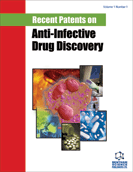Abstract
The Epstein-Barr virus (Human herpesvirus 4) encodes approximately 80 proteins, from which 15 possess at least 90 antigenic epitopes. Many of them stimulate the T cell receptors (TCR), but a few interact with the B cell receptors (BCR). Activation of B-cells and subsequent antibody production has not only been related to at least 3 envelope glycoproteins (mostly gp350) but also to latency associated membrane proteins (LMPs). The majority of EBV epitopes (over 80) inducing either cytotoxic and/or helper T lymphocytes were located on non-structural and/or latency associated polypeptides. The former interaction mediated by CD8plus/T cells is restricted by the HLA I molecules, predominantly of HLA-A subclass. In acute infectious mononucleosis (IM) patients (about 40 %) a considerable proportion of HLA B8 restricted CTL reactivity is directed against a single peptide (RAKFKQLL) of transactivator protein BZLF1/Zta. The EBV vaccines designed so far fall into two categories: those preventing any kind of infection (including prophylaxis of EBVassociated malignancies) and those designed for therapeutic purposes (to be used in subjects already infected). Preventive vaccines protecting against acute disease (such as IM) contain, as a rule, the gp350 polypeptide(s) encoded by the BLLF1 gene. Vaccines destined for tumor prevention rather consist of peptides derived from latency associated nuclear proteins (EBNA 2, 3 and 6) and/or from oncogenic latent membrane proteins (LMP1/LMP2a). Whereas the former generates antibodies preventing virus entry, the latter would potentiate the cell mediated response. In addition to recently described and purified individual recombinant immunogenic EBV polypeptides and/or their mixes, new perspectives were opened by construction of random overlapping strongly immunogenic scrambled polypeptide(s). Further novel approaches are based on carefully selected antigenic peptides (oligopeptides) coming from both, structural as well as non-structural or latencyassociated proteins bound to suitable carriers. Any constructs based on latency-associated proteins might be useful either for immunoprophylactic therapy following bone marrow and/or heart transplantations or for the prevention of EBVrelated tumors such as lymphomas and nasopharyngeal carcinoma. Due to the growing importance of the selected immunogenic epitopes as future vaccine components, at least the half of them has been patented not only as the natural amino acid sequence but also in different variations.
Keywords: Epstein-Barr virus (EBV), immunogenic peptides (epitopes), immunotherapy, prevention, prophylaxis, vaccine design, vaccination.
 122
122





















